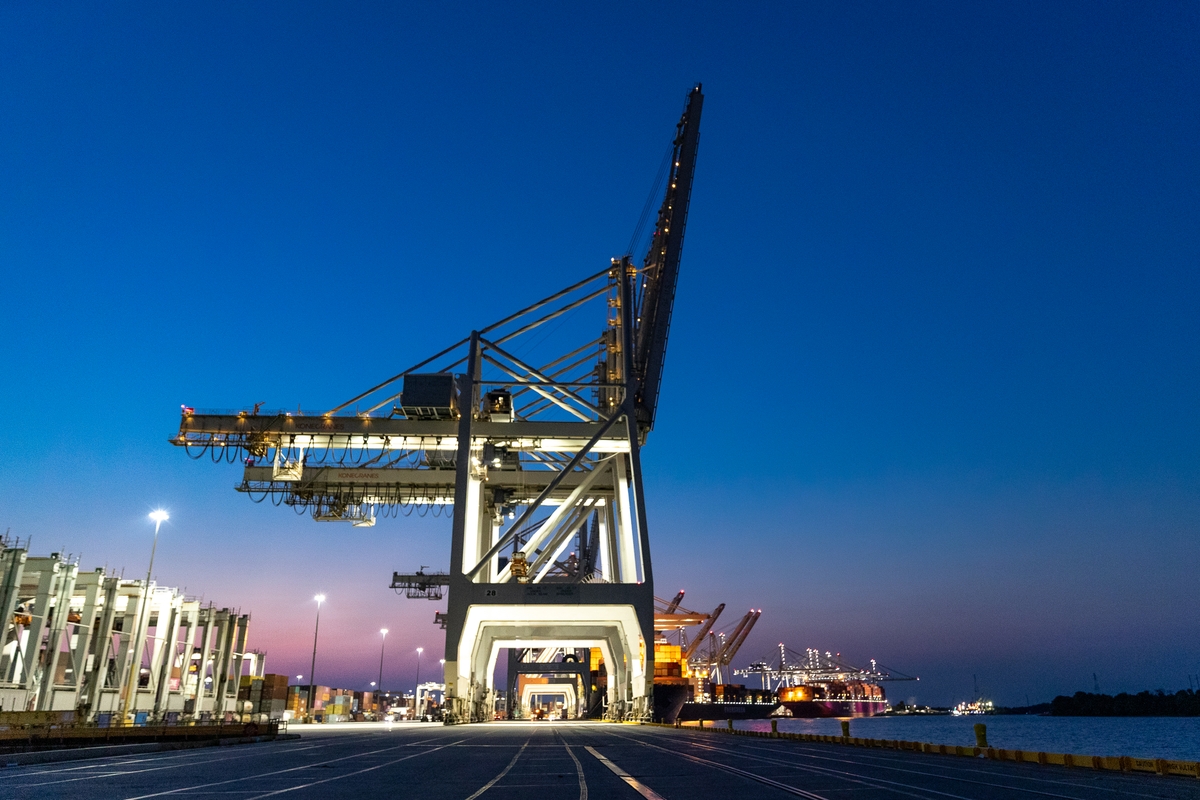There are several key factors involved in relocating internationally, chiefly shipping and interest rates, both of which greatly impact the overall cost of moving abroad. Over the last couple of years, both have been very high.
But in the last few weeks, there have been signs that these rates are on the way down.
The cost of shipping a forty foot container has fallen 33 per cent in the last two months, with maritime and supply chain advisors Drewry expecting costs to decrease further in the coming weeks.
And with central banks across Europe, the Americas and some parts of Asia nudging down interest rates, several of the key economic indicators are starting to suggest that some of the economic rainclouds might - just might - be beginning to clear.
With shipping costs falling and interest rates easing, the financial outlook for international relocation is improving. Not only do falling spot rates make shipping your precious things cheaper, but falling interest rates could substantially reduce the cost of borrowing for major purchases, such as a new home. These changes may provide an opportunity for those who have been waiting for more favorable conditions to move.
Here, we examine what that might mean in the context of planning your next global relocation, but please note – the content here does not constitute personal advice. Be sure to seek such advice from an independently qualified financial advisor.

Feeling the squeeze and putting dreams on the backburner
It’s indisputable that economic conditions over the last two years have caused dreams to be put on hold. The cost-of-living crisis has squeezed us all.
It’s hard to pinpoint this on any one event or incident, but commentators have suggested many different reasons for soaring inflation. Pent up demand during the pandemic put a subsequent strain on supply chains as countries lifted restrictions, with supply struggling to keep pace. This was then compounded by a sharp rise in energy prices, driven largely by Russia’s war with Ukraine.
It has been an expensive time to move
In Europe’s most developed economies, the rate of inflation exceeded 10 per cent in 2022, and nine per cent in North America. Across the world, few countries escaped rising inflation, meaning prices were rising faster everywhere.
To counter this, central banks increased interest rates to cool demand and make money more expensive to borrow. This has a big impact, particularly on housing, making mortgages more expensive which impacts both buyers and renters.
This has curbed inflation, but with plenty of economic uncertainty, those interest rates have stayed higher for longer – stifling personal and business investment.

Are economic conditions improving?
There are, however, signs that this has started to change. In the USA, an eagerly anticipated – but not entirely expected - cut to interest rates has taken place, with the Federal Reserve moving to reduce its key rate by half a percentage point, meaning the federal funds rate sits at a range of 4.75% to 5%.
Through August and September, 15 other central banks, including those in the UK, New Zealand and Europe, have cut base rates – albeit by just a quarter of a percentage point in most cases, but more reductions are expected in the coming months.
For many countries, these are the first cuts to interest rates since March 2020 – when the world began entering a period of pandemic lockdowns.
In places like the UK, the International Monetary Fund (IMF) is recommending that the Bank of England gradually cuts its base rate to 3.5 per cent by the end of 2025.
On large purchases, like a house, the difference on repayments between a loan on a three per cent interest rate and a five per cent interest rate is considerable. And critically, lenders tend to track with the base rate of the national central bank – so if central banks are reducing rates, lenders will follow suit.
This article by the BBC offers a comprehensive explanation of what the rate cut in the USA could mean – and what rate cuts mean more generally – for the global economy.
But there are still further hurdles to consider. For one, the picture isn’t the same everywhere. The Reserve Bank of Australia and the US Federal Bank have moved to increase interest rates upon their latest monetary policy reviews. India, South Korea, Japan, South Africa and Japan have made similar moves.
In July, IMF chief economist Pierre-Olivier Gourinchas said further challenges to disinflation in advanced economies could force central banks to keep borrowing costs higher for longer than markets predicted. In its latest update, the UK’s Monetary Policy Committee at the Bank of England, opted to hold rates at five per cent, choosing not to further reduce the base rate after cutting the rate in August.
As we’ve seen in the USA and Europe, rates – when they are reduced – are likely to be reduced in very small increments, meaning borrowers are unlikely to see an immediate change to the costs of borrowing.
Shipping: another big relocation cost
We have extensively documented the impact that conflict in Gaza has had on the vital Red Sea and Suez Canal shipping passage.
At the beginning of 2023, most of the world’s major container shipping lines decided it was not safe to use the Red Sea – a ‘shortcut’ for vessels transiting between Europe, the US east coast and Asia. This came after Houthi Rebels started attacking commercial vessels in response to Israel’s war in Gaza.
It meant ocean cargo moving along the world’s busiest trade lane was being diverted around Africa, adding 3,500 nautical miles to routes and 10 days to schedules. This in turn created port congestion, with the all-encompassing impact being a huge increase in the cost of shipping goods.
Put simply, it has been comparatively more expensive to live or move anywhere in the world in recent years.
Uncertainty continues to loom large over global markets, with geopolitical tensions in various regions creating a sense of economic fragility that’s hard to shake.
Shipping costs on the way down
However in recent weeks, there has been some good news when it comes to container freight rates. In July, all these pressures caused container rates to peak at US$5,397 for a 40ft container, according to Drewry.
That cost has fallen 33 per cent since, with a steep drop in prices coming through the first two weeks of September.
On July 18, Drewry’s World Container Index had the cost of shipping a container from Shanghai to New York at $9,612. By September that cost was at $6,364. Shangai to Genoa cost $7,727 in July, but was down to $4,928 in September. Drewry expects these East-West rates to continue to fall in the coming weeks.
The cost of shipping containers from west to east is also falling, but with much less speed. For instance, since the end of August, the cost of shipping a 40ft container from Rotterdam, in the Netherlands, to Shanghai has fallen by just 2.5 per cent. But the rates here are already at a much lower base than for containers heading in the opposite direction.
For those who may have been hesitant to make the leap due to soaring costs in recent years, the recent drop offers more than a glimmer in opportunity. Now might be a good time to revisit your plans for relocation.
More caveats....
Shipping 40ft containers – particularly from east to west – remains considerably more expensive than it was prior to the pandemic.
The latest Drewry WCI composite index of $3,970 per 40ft container is 60 per cent below the previous pandemic peak of $10,377 in September 2021, but it is 193 per cent more than the average 2019 (pre-pandemic) rate of $1,420.
So while these latest decreases will certainly make shipping cheaper, we’re still some way from costs being comparable to pre-pandemic levels.
The news is also a little more complex on Asia to US trade routes. Further proving that the cost of moving goods internationally is at the mercy of all manner of events, the very latest data shows that the cost of shipping between Asia and the US has increased fractionally in recent weeks.

....And strikes loom in the U.S.
This is ahead of potential strike action at east coast and Gulf ports by the International Longshoremen's Association (ILA) at the beginning of October.
Reuters described a “surge of imports” at east coast ports through the summer months, with volumes increasing by 12.9 per cent in August. This is where shippers had been bringing forward the imports of goods into US east coast ports before that strike action set in. That caused costs to rise. But as that strike action looms large, demand for importing into the east coast has now weakened, meaning the cost of shipping to ports on the east coast has plummeted 21 per cent based on mid-September data.
Drewry notes that prices have increased between Shanghai and Los Angeles, as shippers switch the destination of their US cargo from the east to the west coasts.
So what does all this mean?
While challenges remain, the combination of declining shipping rates and easing interest rates suggests that conditions for international relocation are starting to improve. If you’ve been considering a move abroad but were deterred by high costs this could be the opportunity you were waiting for.
You should, however, also seek the right professional financial advice to give you full scope over your options.